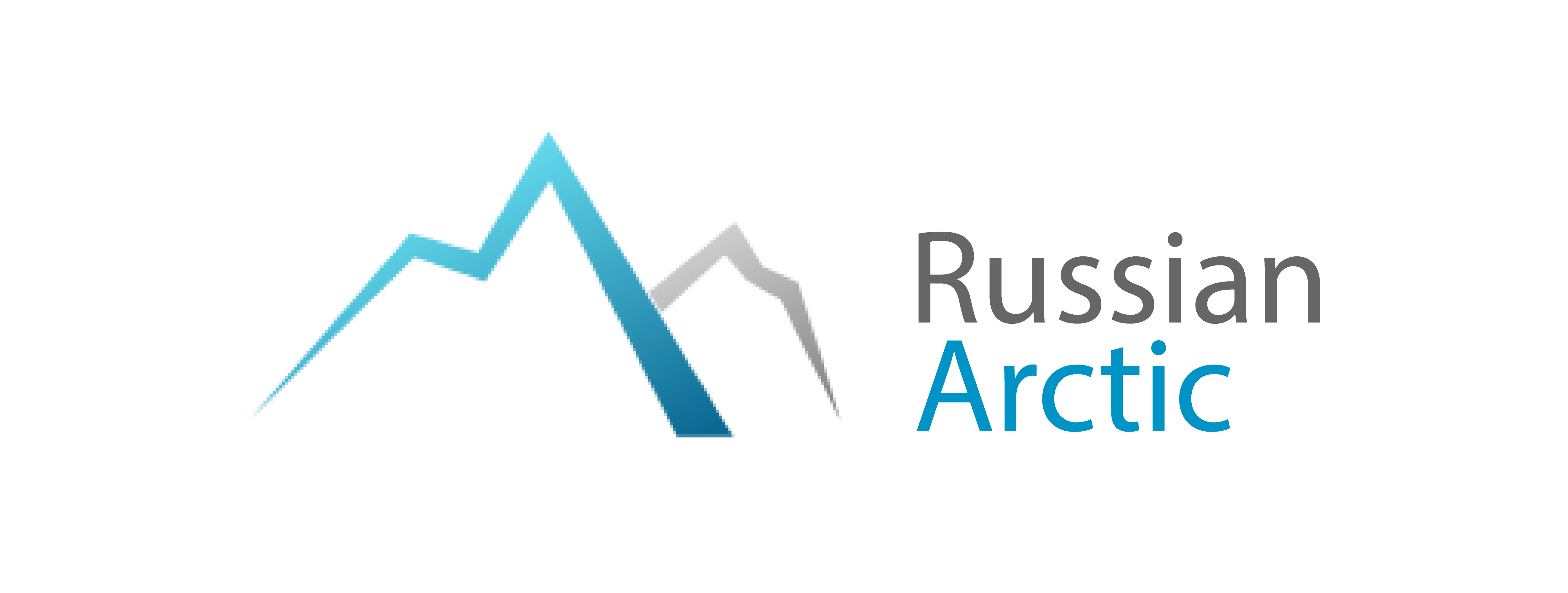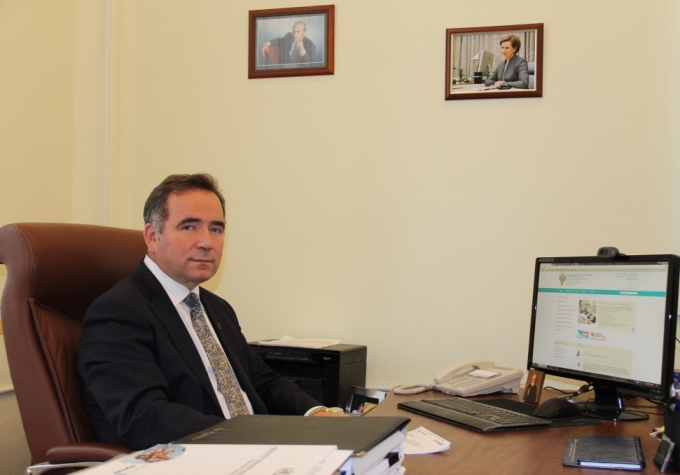Mr.Gorbanev, please tell us about the current researches of the Centre aimed at solving actual problems in the AZRF?
For 30 years now, the Centre has been conducting comprehensive environmental and hygienic research in the regions of the Russian Arctic, within the framework of international cooperation as well. It has conducted hygienic and ecotoxicological studies of environmental contamination with long-lived toxic substances. Based on the scientific research, the scientists are developing measures to minimize the negative anthropogenic impact on the Arctic environment.
They conduct hygiene studies of local food safety, drinking water quality, working conditions and many other studies of the environment and public health in the Arctic.
What scientific studies carried out by the Centre’s specialists deserve special attention?
Currently, the Centre’s researchers are implementing several projects; one of the most interesting is creation of geoportal “Sanitary and Epidemiological Welfare of the AZRF Population”.
This is a vast database containing long-term and regularly updated information about demography and health of the population, living conditions, water supply, industrial and economic pollution of the environment, the state of infrastructure, etc. The geoportal will become an efficient tool for assessment of the impact of adverse living conditions and environmental factors on the population health, for the purpose of an objective assessment and improvement of efficiency of social and hygienic monitoring, and social and economic AZRF development programs.
According to the social and hygienic monitoring data, what are the main problems of sanitary and epidemiological welfare in the AZRF?
According to the social and hygienic monitoring data, the population of the Arctic regions of the Republic of Sakha (Yakutia), Arkhangelsk and Murmansk regions has been steadily decreasing over the last 10 years. Demographic and health indicators in the AZRF show, on the one hand, a decrease both in general mortality (from 10.1 to 9.3 per 1,000 population) and infant mortality (from 10.9 to 6.7 per 1,000 live births), and an increase in life expectancy; on the other hand, these figures show an increase in mortality from malignant tumours (from 1.25 to 1.45 per 1,000 population). Over the last 11 years, incidence of malignant tumours has a clear upward trend, with the Murmansk and Arctic territories of the Arkhangelsk region being the risk areas. For the Federal Service for Supervision of Consumer Rights Protection and Human Well-Being (Rospotrebnadzor), the climate change processes, such as warming, which cause the change of permafrost borders, mean problems of assessment of the permafrost thaw risk in the areas of cattle burial sites, domestic and industrial waste deposit, epidemiological risk formation, as the main water supply sources in the Arctic are surface water bodies.
In your opinion, what are the priority tasks for public health maintenance in the AZRF?
Taking into account high rates of the planned development of the Arctic, we consider the following tasks to be the top-priority directions in sanitary and epidemiological welfare in the AZRF:
Provide for medical and ecological, and economic assessment of consequences of the adverse risk factors impact on the population health while implementing investment projects for AZRF development.
Justify, develop and introduce non-standard management solutions relating to labour and daily life of people in difficult climatic conditions.
Introduce medical and biological criteria for professional selection for work in the Arctic, including application of on/off rotation methods.
Form and maintain systems of regional registers of infectious and parasitic morbidity, oncopathology, maternal and child health.
Justify requirements for adjustment of social and hygienic monitoring programs including indicators representative of the content of highly toxic pollutants and pathogens of hazardous infections and invasions transmitted by the food chain through the traditional industry objects of the population, as well as social and climatic characteristics of the region.
For 30 years now, the Centre has been conducting comprehensive environmental and hygienic research in the regions of the Russian Arctic, within the framework of international cooperation as well. It has conducted hygienic and ecotoxicological studies of environmental contamination with long-lived toxic substances. Based on the scientific research, the scientists are developing measures to minimize the negative anthropogenic impact on the Arctic environment.
They conduct hygiene studies of local food safety, drinking water quality, working conditions and many other studies of the environment and public health in the Arctic.
What scientific studies carried out by the Centre’s specialists deserve special attention?
Currently, the Centre’s researchers are implementing several projects; one of the most interesting is creation of geoportal “Sanitary and Epidemiological Welfare of the AZRF Population”.
This is a vast database containing long-term and regularly updated information about demography and health of the population, living conditions, water supply, industrial and economic pollution of the environment, the state of infrastructure, etc. The geoportal will become an efficient tool for assessment of the impact of adverse living conditions and environmental factors on the population health, for the purpose of an objective assessment and improvement of efficiency of social and hygienic monitoring, and social and economic AZRF development programs.
According to the social and hygienic monitoring data, what are the main problems of sanitary and epidemiological welfare in the AZRF?
According to the social and hygienic monitoring data, the population of the Arctic regions of the Republic of Sakha (Yakutia), Arkhangelsk and Murmansk regions has been steadily decreasing over the last 10 years. Demographic and health indicators in the AZRF show, on the one hand, a decrease both in general mortality (from 10.1 to 9.3 per 1,000 population) and infant mortality (from 10.9 to 6.7 per 1,000 live births), and an increase in life expectancy; on the other hand, these figures show an increase in mortality from malignant tumours (from 1.25 to 1.45 per 1,000 population). Over the last 11 years, incidence of malignant tumours has a clear upward trend, with the Murmansk and Arctic territories of the Arkhangelsk region being the risk areas. For the Federal Service for Supervision of Consumer Rights Protection and Human Well-Being (Rospotrebnadzor), the climate change processes, such as warming, which cause the change of permafrost borders, mean problems of assessment of the permafrost thaw risk in the areas of cattle burial sites, domestic and industrial waste deposit, epidemiological risk formation, as the main water supply sources in the Arctic are surface water bodies.
In your opinion, what are the priority tasks for public health maintenance in the AZRF?
Taking into account high rates of the planned development of the Arctic, we consider the following tasks to be the top-priority directions in sanitary and epidemiological welfare in the AZRF:
Provide for medical and ecological, and economic assessment of consequences of the adverse risk factors impact on the population health while implementing investment projects for AZRF development.
Justify, develop and introduce non-standard management solutions relating to labour and daily life of people in difficult climatic conditions.
Introduce medical and biological criteria for professional selection for work in the Arctic, including application of on/off rotation methods.
Form and maintain systems of regional registers of infectious and parasitic morbidity, oncopathology, maternal and child health.
Justify requirements for adjustment of social and hygienic monitoring programs including indicators representative of the content of highly toxic pollutants and pathogens of hazardous infections and invasions transmitted by the food chain through the traditional industry objects of the population, as well as social and climatic characteristics of the region.



